
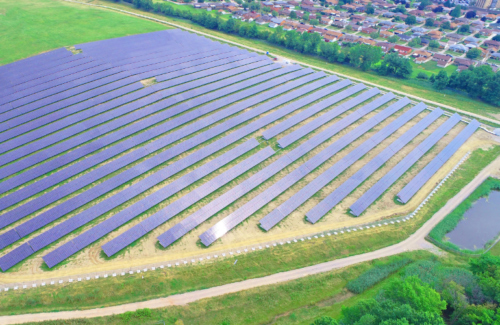
META Solutions is a government regional committee that provides services to school districts, local governments, and public entities across Ohio. The committee has announced the award of the main contract for delivering solar infrastructure projects to Veregy. Veregy stands out through a competitive RFQ and RFP process, which aims to select a qualified Risk Construction Manager (CMR) with design support capabilities based on Ohio procurement guidelines. The selection process follows the requirements of Section 9.33 and subsequent provisions of the Ohio Revised Code (ORC), while the main contract is formulated in accordance with ORC Section 167.081, which authorizes government committees to provide collaborative procurement solutions and adopt standardized unit prices for use by public entities throughout the state. Veregy will also provide Design Assistance (DA) services as stipulated in ORC Article 153.501. As the winning supplier, Veregy will support META Solutions members in implementing cost-effective and scalable solar projects, and simplify procurement and implementation processes. K-12 school districts, city governments, county governments, and other eligible public entities can now directly obtain pre qualified solar development services, thereby avoiding the time and administrative burden of independent bidding. Collaborative procurement through META Solutions will bring significant advantages to public entities, including time savings, cost reduction, and simplified procurement processes. By leveraging the collective purchasing power of its members, META ensures to provide high-quality services at competitive prices that were previously difficult to reach. This simplified approach eliminates the need for a separate bidding process, allowing schools and local governments to accelerate project progress, reduce administrative burdens, and concentrate resources on their core tasks. In addition, it has created new opportunities to seek innovative solutions that support long-term financial and operational goals, such as solar energy systems. Stephanie Zinger from META Solutions said, "This contract represents an important step forward for Ohio's public entities preparing to invest in sustainable energy solutions. By partnering with Veregy, our members can now more conveniently use solar infrastructure, achieving long-term savings and assuming environmental responsibility
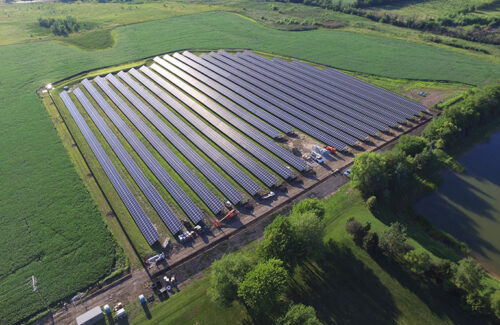
Commercial solar contractor Summit Ridge Energy is partnering with Digital Realty to provide 5.1 megawatts of solar energy annually to the data center company. Through this acquisition, Digital Realty, which provides cloud and operator neutral data center solutions, will advance its sustainable development goals. The agreement covers energy cost savings and the purchase of renewable energy credits generated from three commercial solar projects owned and operated by Summit Ridge in Illinois. These projects are expected to be electrified and interconnected with Commonwealth Edison by the end of 2025 to early 2026. This collaboration will enable Digital Realty's data center located in northern Illinois to offset some of its energy consumption. In addition, the newly constructed solar projects will help enhance the resilience of Illinois' power grid and support economic development by creating hundreds of construction and manufacturing jobs. Aaron Binkley, Vice President of Sustainability at Digital Realty, stated, "At Digital Realty, we are committed to advancing sustainable energy solutions that align with our global carbon reduction goals. Collaborating with Summit Ridge Energy will help us integrate more renewable energy into our operations and also contribute to building a more resilient power grid in Illinois. ” These projects are part of Summit Ridge's larger plan to enhance grid stability and further strengthen the local power system through measures such as voltage support and frequency regulation. The three distributed solar power plants powering Digital Realty are part of Summit Ridge's 439 MW solar power plant in Illinois. Marc Fioravanti, Senior Vice President of Business Development at Summit Ridge, stated, "Digital Realty's commitment to sourcing solar energy highlights the growing importance of utilizing alternative energy solutions in industries that rely on reliable electricity. Through this agreement, we will build a diversified and stronger power grid while bringing tangible benefits to businesses. This collaboration demonstrates that solar energy plays an important role in the rapidly growing energy demand of technology companies, including those driven by the growth of artificial intelligence and data processing
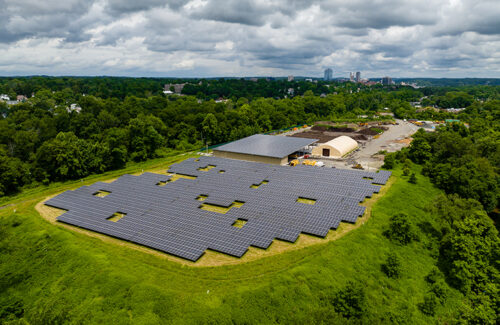
New York Governor Casey Hochul announced today that 26 large-scale land-based renewable energy projects have been signed, which will provide over 2.5 gigawatts of clean energy upon completion, enough to power over 670000 households in New York State. These projects are expected to create over 1900 short-term jobs and bring in more than $6 billion in private investment, while consolidating New York State's commitment to developing local clean energy, enhancing grid resilience, and economic development. New York is creating competitive opportunities for the clean energy industry, and without a shared commitment from private sector partners, we cannot achieve this, "Governor Hochul said. The development of renewable energy is the foundation of New York's plan to transition to a zero emission power system and will continue to maintain the momentum of green economy development These contract awards are the result of the New York State Energy Research and Development Authority's (NYSERDA) 2024 Tier 1 Renewable Energy Standard tender. After completion, these projects will generate approximately 5000 gigawatt hours of electricity annually, enough to power over 670000 households and bring public health benefits by reducing exposure to harmful air pollutants; And will provide over $300 million in funding commitments to vulnerable communities defined by the Climate Justice Working Group through long-term payments to community welfare funds. The contracted projects include: capital region Dolan Solar in Washington County Hawthorne Solar Energy in Rensselaer County Washington County Summers Solar Shepherd's Run Solar Energy Project in Columbia County Central New York State Agricola Wind in Cayuga County Homer Solar Center in Cortland County finger lake Highbanks Solar in Livingston County Horseshoe Solar Center, Livingston County and Monroe County Valcourt Bliss Wind Farm in Wyoming County Mohawk Valley Dorgeville Hydroelectric Company in Hekimo County Montgomery County Flat Creek Solar Montgomery County Mill Point Solar I Skyline Solar, Oneida County the North Essex County ELP Ticonderoga Solar Franklin County Covington Fort Solar Farm Lewis County Lyons Falls Mill Power Plant Jefferson County Tracy Solar Center Shuanghe Solar Farm in St. Lawrence County Clinton County Valcourt Altona Wind Farm Clinton County Valcourt Clinton Wind Farm Southern region Morin Solar Center in Allegheny County South Ripley Solar, Shotokua County York Operations Solar Energy Company, Shotoqua County In addition, New York State will continue to emphasize interaction with the community where the project is located. The New York State Energy Research and Development Agency (NYSERDA) provides resources and free technical assistance to help local governments understand how to manage responsible clean energy development in their communities, including providing step-by-step instructions and tools to guide coordination, licensing processes, property taxes, site selection, zoning plannin...
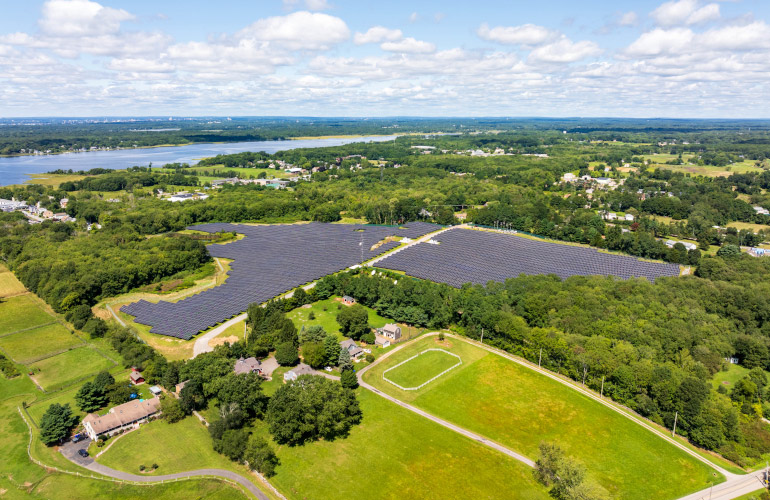
According to Wood Mackenzie's latest report on the competitive landscape of commercial solar energy in the United States, the third-party ownership (TPO) market share of non residential projects in the United States is expected to increase from 69% in 2023 to 72% in 2024. The report predicts that the TPO sector will continue to lead commercial and community solar financing, with market share reaching 74% by 2026 and dropping to 62% by 2029. According to Wood Mackenzie, Nexamp has the largest TPO market share (7%) in 2024, followed by Summit Ridge Energy (6.5%) and Standard Solar (5.3%). Amanda Colombo, research assistant at Wood Mackenzie, said: "The maturity of the tax credit transferable market is driving the growth of third-party ownership. Transferable tax credits provide TPO projects with simpler, more economical, and more flexible monetization options. Small and medium-sized project developers have stated that transferability simplifies third-party financing. ” The report also found that the overall commercial solar market in the United States reached an annual high in 2024, with a national increase in installed capacity of 2.1 gigawatts. Major states such as California, Maine, and Illinois drove an 8% year-on-year growth. Looking ahead, Wood Mackenzie predicts that the United States will add over 11 gigawatts of direct current commercial solar installed capacity in the next five years. The expected increase in electricity prices, growth in emerging markets, and continued impetus from the Inflation Reduction Act will be key drivers of installed capacity growth. Colombo said, "Driven by favorable factors such as low development costs, untapped solar potential, and sufficient available land, the installation volume of emerging solar state markets across the United States is surging. It is worth noting that commercial solar deployment in underdeveloped markets in the Midwest and Southeast regions is significantly increasing
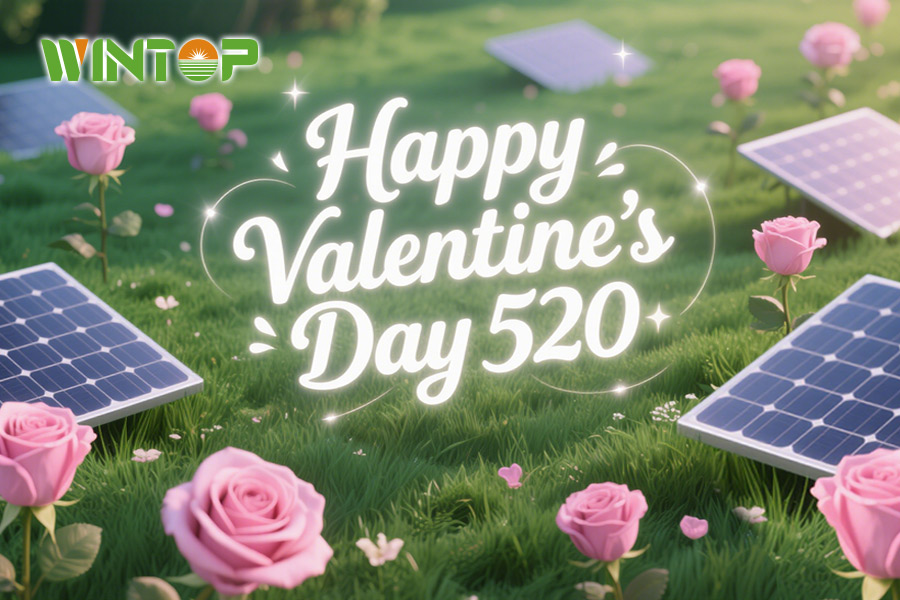
Network Valentine's Day is a love festival in the information age, celebrated annually on May 20th and 21st. The festival originated from the metaphor of "520" as "I love you" in singer Fan Xiaoxuan's "Digital Love" and the close connection between "I love you" and "online lover" in musician Wu Yulong's online songs. Later on, "521" was gradually given the meaning of "I am willing, I love you" by couples. Online Valentine's Day "is also known as" Wedding Day "," White Day "," Spoiler's Day ", and" Love Day ". In this trendy, youthful, spiritual, and implicit festival, "520 (521) 1314 I love you (I am willing) for a lifetime" is its classic digital quote, and Wu Yulong's "Online Lover" is the theme song of the festival. People boldly say (show) love through (mobile phone, traditional PC) Internet (WeChat, QQ, microblog, forum, etc. as platforms) or mobile phone text messages, and even send gifts (red envelopes) to convey love and find love on blind dates. There are also countless couples gathering to register for marriage and hold a grand wedding banquet. Many businesses also take the opportunity to carry out group buying, discounts and other promotional activities, which has set off a wave of holiday fever online and offline. With the increasing number of festival participants, various media (newspapers, television, the Internet, etc.) are competing to report the grand events of 520 and 521 "Internet Valentine's Day", "Daying", and "Pettish Day".
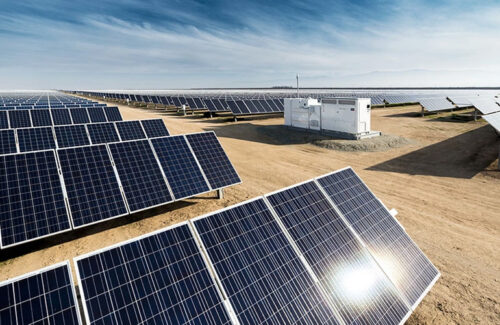
SMA America announced that it will begin assembling medium voltage power plant (MVPS) solutions in the United States in 2026 to strengthen the company's logistics network and enhance services to utility scale solar customers across the country. The inverters will still be manufactured in Germany and then shipped to the United States, where they will be integrated with transformers and rails to form the final system, which will ultimately be delivered to customers. MVPS is a fully integrated turnkey solution that integrates SMA central inverters, medium voltage transformers, and switchgear in a 20 foot sliding rail container. It is designed specifically for large-scale solar and energy storage projects, ensuring efficient and grid compliant energy conversion while minimizing on-site installation work. Jay Arghestani, General Manager of Large Equipment Sales, Technology, and Marketing at SMA America, stated, "This is a crucial step forward for both SMA America and our customers. Domestic integration can help shorten project timelines, reduce transportation complexity, and may contribute to domestic content strategies under the Inflation Reduction Act, depending on how customers construct their solutions. ” SMA plans to begin assembling MVPS in the United States in the first quarter of 2026 and gradually launch it to customers in the second quarter of 2026. In the process of increasing local production capacity, the share of local content will gradually increase.
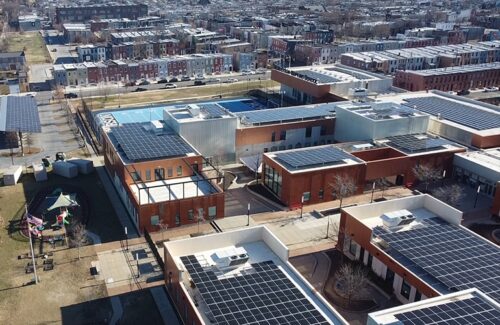
Earlier this year, the Climate Access Fund, Solar Steward, CohnReznick, and other partners launched the Solar4Us @ Henderson Hopkins project, a $3.8 million, 808 kilowatt rooftop community solar project. The project is owned and developed by the Climate Access Fund and is located at Elmer A. Henderson: Johns Hopkins University, a public K-8 school in Baltimore. The Solar4Us @ Henderson Hopkins project not only saved nearly $1 million in energy costs for approximately 150 low - and middle-income households over 35 years and provided vocational training opportunities, but also expanded practical pathways for businesses to participate in energy transition through Social Renewable Energy Certificates (Social RECs). Through the unique arrangement developed by Atlanta based social enterprise Solar Stewards, the school's vocational training and courses will be funded through the purchase of Solar4Us @ Henderson Hopkins' Renewable Energy Credit (REC) by professional service company CohnReznick, generating over $250000 in sustained income for the Solar4Us @ Henderson Hopkins project, Climate Access Fund, and the organization's future community solar goals. We recognize that businesses play an important role as' good stewards' and 'good neighbors' of the local economy, "said Anton Cohen, Partner and Head of Renewable Energy Business at CohnReznick. The collaboration with Solar Stewards has clarified the scope of renewable energy credit lines and provided an economic basis for CohnReznick to pay a premium for social renewable energy certificates (Social RECs). Our collaboration enables hundreds of households to access clean and affordable electricity at reasonable prices, while saving on electricity bills and reducing our company's carbon footprint. ” Through the Solar Stewards market, all revenue from REC will be used to fund community projects that bring social and economic benefits to historically excluded communities, thereby creating social REC. The annual membership of Solar Stewards Marketplace enables businesses to choose available community opportunities and select projects that align with their mission and goals. The Solar Stewards team will review each project. The team provides high-level rigorous review and supervision to verify participation in the community and help businesses reduce risks, ensuring the effectiveness of social impact statements.
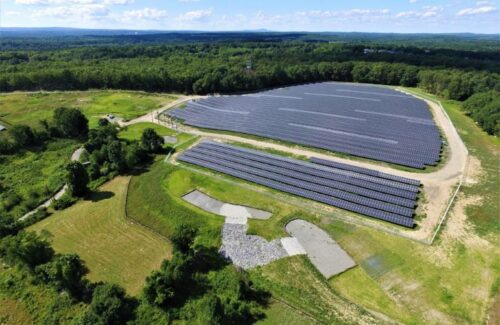
On May 13th, Massachusetts Governor Maura Healey proposed the Energy Affordability, Independence, and Innovation Act, aimed at reducing costs for residents and businesses. This bill addresses the issues in the solar energy industry from several aspects. Firstly, it will allow the Massachusetts Department of Energy and Resources (DOER) to sign new clean energy procurement contracts instead of requiring them to facilitate contracts through utility companies. The bill will also require Massachusetts utility companies to update their interconnection processes to reduce the time and cost for customers to connect solar projects to the grid. On the negative side, the bill also proposes to reduce net metering compensation for non residential solar projects (including community solar). The Community Solar Access Alliance (CCSA) expressed dissatisfaction with this provision of the bill and demanded that the governor change his approach. CCSA Northeast Regional Director Kate Daniel said in a press statement, "Some of the first community solar projects in the state, as well as many projects serving municipalities and local governments, have adopted net metering pricing. We are concerned that the proposals in the governor's bill may hinder progress on these projects, as well as other solar projects such as the Massachusetts Solar Renewable Energy Target (SMART) program. By changing the compensation rate for solar projects, Governor Healy has taken a step back in providing clean and affordable energy for Massachusetts residents

HOMIE is a home solar and thermal insulation company that is currently partnering with Climate First Bank to expand financing channels for low - and middle-income homeowners seeking energy upgrades. HOMIE founder Travis Montaque said, "Collaborating with Climate First Bank is an important step towards achieving our mission. We are committed to eliminating barriers that prevent families from moving into safe, affordable, and durable homes. Joining hands with Climate First Bank, we are partnering with an institution that upholds our vision of fairness, sustainable development, and healthier communities. Working hand in hand, we will ensure that more people have clear and convenient access to healthier and more energy-efficient homes. ” Through collaboration with Climate First Bank, HOMIE financing services will be available to homeowners in 49 states. In the past two years, Climate First Bank has issued over $300 million in solar loans. HOMIE's services cover from initial home health assessment to final installation. HOMIE will integrate with OneEthos, the fintech platform of Climate First Bank, allowing homeowners to access financing options, incentives, and solar tax credits through the platform. Currently, 17% of Climate First Bank's solar loans support low - and middle-income homeowners, and the launch of HOMIE will further expand its influence, the two companies said in a press release. I am pleased to announce the establishment of a new partnership between Climate First Bank and HOMIE. This cooperation represents an important step forward for the bank in its commitment to providing affordable clean energy. Chris Castro, Chief Sustainability Officer of Climate First Bank, said, "We are committed to providing solar financing solutions across the United States. By combining the bank's expertise with HOMIE's unique approach, we aim to create impactful initiatives that benefit communities and drive positive change. We will work together to build a brighter and more sustainable future. ” HOMIE was launched in Florida earlier this year, offering solar and thermal insulation services, and plans to expand its service coverage nationwide.
Categories
New Products
Tin Roof Rapid Solar Mounting System with Hanger Bolt Read More
Residential Small Solar Easy Bracket Kit for Home Balcony Read More
Automatic Single Pile Solar Tracker with 10 PV Panels Read More
Angle Adjustable Aluminum Easy Solar Panel Bracket for Garden Read More
Intelligent Single Post Dual Row Solar Tracking System Read More
5000ES Solar Off-Grid Energy Storage Inverter Supplier Read More
Multi Drive Double-Sided Single Axis Tracker System Read More
© Copyright: 2025 Xiamen Wintop New Energy Tech Co., Ltd.. All Rights Reserved.

IPv6 network supported
Friendly Links:
Integrated Solar System